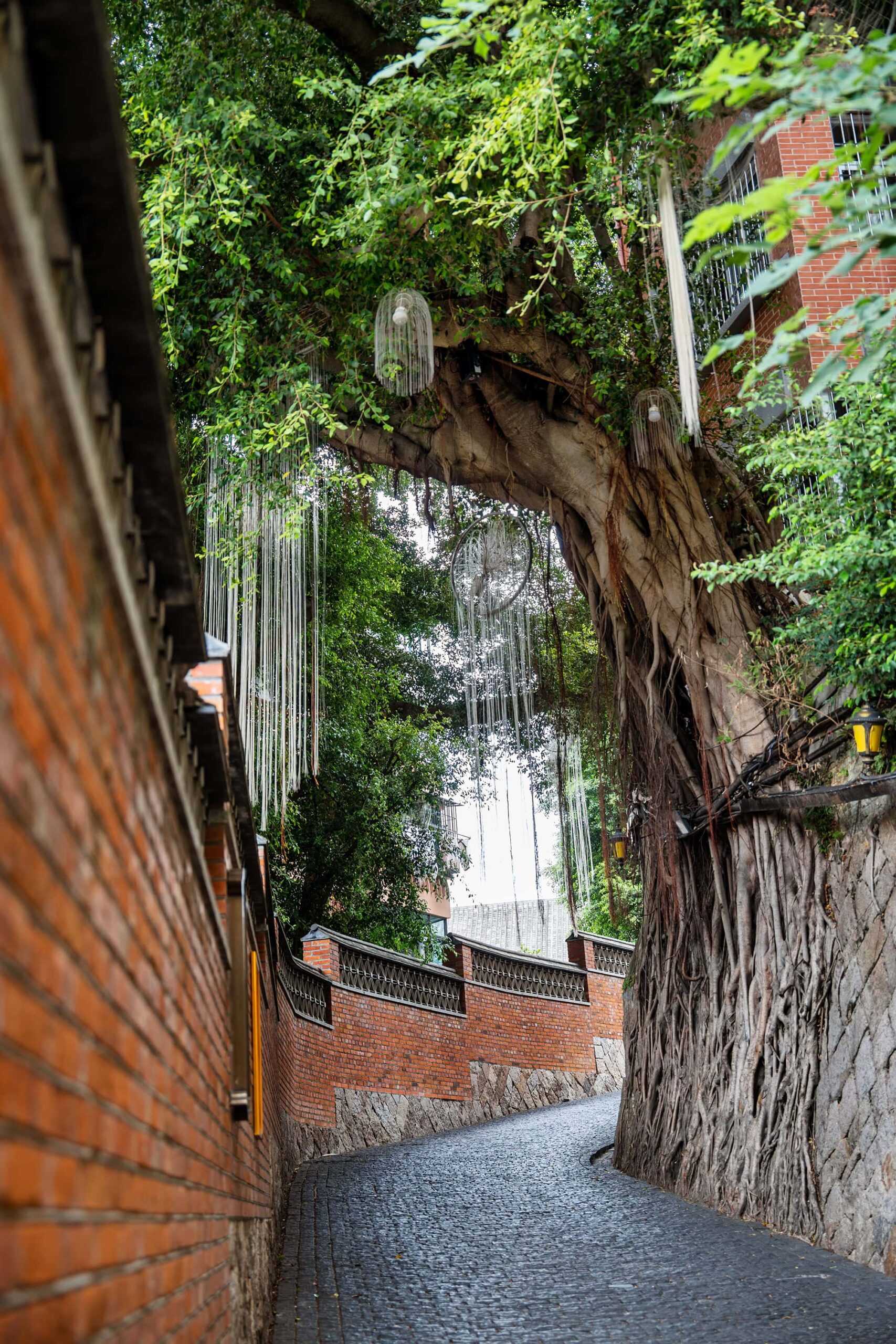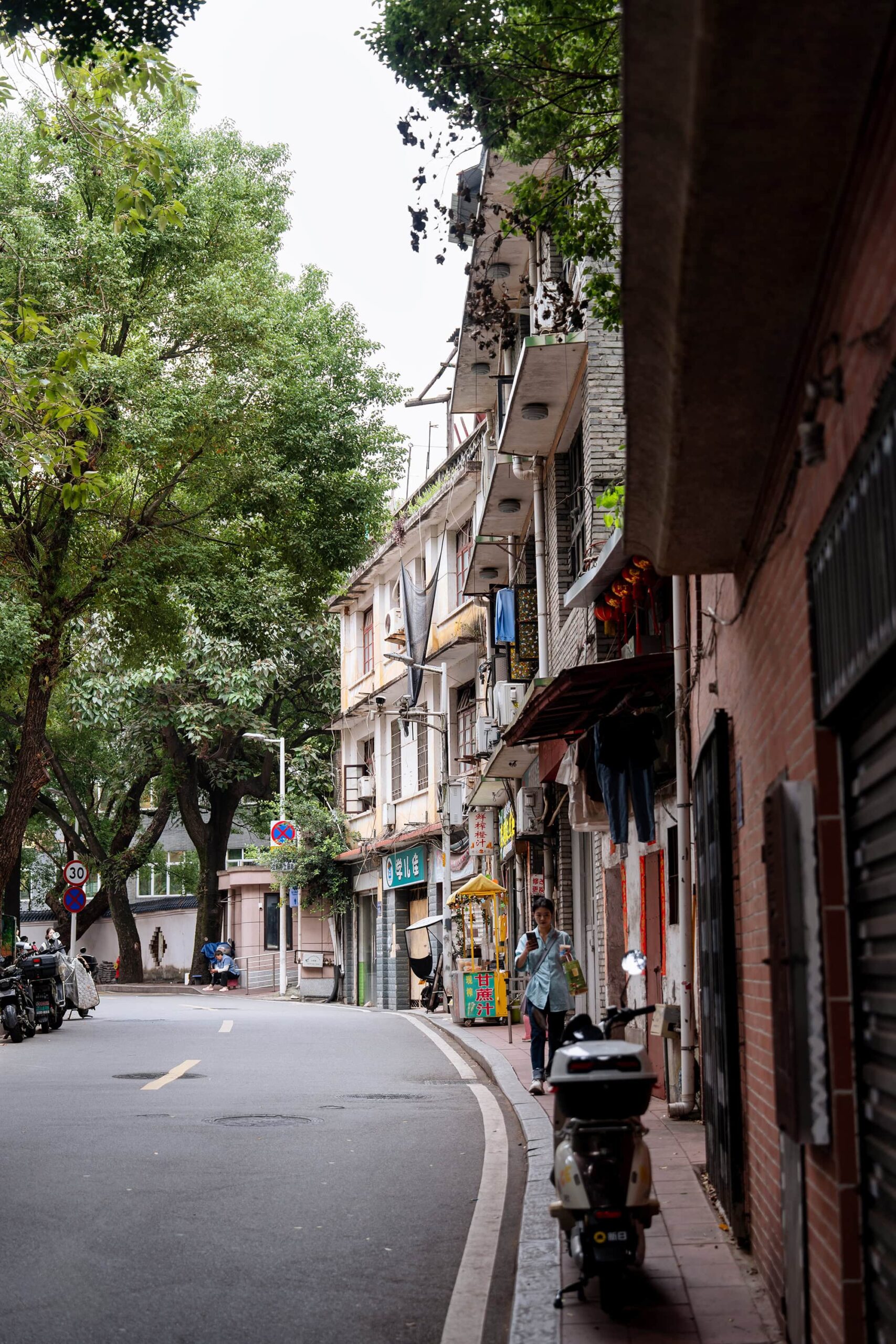Travel & Planning for New Destination Released. Free Shipping to Most Countries Around the World.
Free Shipping to Most Countries Around the World.
North of the Min River lies Tiantai Hill – also known as Tianning Hill – hailed as a “museum of world architecture.” The renowned writer Ye Shengtao once observed, “Every garden, every street, every cluster of flowers, every house, every coachman here breathes poetry.” Since Fuzhou opened its port to foreign trade in 1845, seventeen countries, including Britain and France, established their consulates, churches, and trading houses on this hill.
Today, more than 160 structures from the late Qing and Republican eras still stand, their façades ranging from Gothic and Romanesque to eclectic hybrids—silent witnesses to the city’s early encounters with the outside world and its evolving history.
The name Yantai Hill, literally “Smoke Platform Hill,” reaches back to the days when its summit held a beacon tower used to signal coastal defenses against Japanese invaders.
Before the trip, several local drivers warned me not to come on a weekend. “It’s packed from Saturday afternoon onward,” they said. So I went on a weekday instead-though in hindsight, avoid Mondays, since most museums are closed then.
Yantai Hill is vast, full of corners worth wandering. An easy half day can slip away before you realize it. I began at Yantai Hill Park, and followed a simple walking route.
The first stop was Wanchun Road, often dubbed “the most beautiful corner.” It certainly draws attention—mostly young women queuing under an overcast sky to photograph the Wanchun Alley sign. I counted about twenty of them waiting for a turn. Even the elderly lady watching from the roadside couldn’t help muttering, “What’s the point of taking pictures when there’s no light?” I had to agree-the social‑media frenzy seems to have worn out our sense of beauty. So, if the sun’s hiding, skip this stop and head straight to the Daguan Art Museum-a small but refined space, quietly exquisite.
From there, I continued to the Deputy Commissioner’s Residence of the Imperial Maritime Customs, then the former French Consulate, and finally Shicuo Church. The church has the modest charm of a countryside European chapel—sweet, if not quite as magnificent as the guides claim. Still, in the Chinese context, it feels special in its own understated way.
The highlight for me was the former American Consulate. Its location is unbeatable: from the terrace, you can gaze upon the Min River, the hillside villas, and the bustling street below. Inside, both floors are tastefully staged for visitors who like to take photos. One room even features a Harry Potter theme—with a replica of Hedwig and a staircase stacked with “magic books.” The place also serves afternoon tea—a cozy treat for anyone wanting to linger and indulge in a bit of fantasy.
Fuzhou well deserves its nickname, the City of Banyans. The sprawling old banyan trees lend a sense of shade and time, their roots embracing red‑brick houses from the Republic era—a scene layered with nostalgia and grace.
The Hwa Nan College – now part of Fujian Normal University – still exudes a classic collegiate charm. The Peace Building there, where I took one of my favorite photos, embodies that evocative Republic‑era style. While wandering the campus, I stumbled upon a model and photographer shooting for hours; the sight made me think – this is the perfect place for anyone wearing a long dress or cheongsam, looking to capture something timeless.












We use cookies to optimize your experience, analyze usage, and personalize content. Your continued browsing indicates consent to our cookie usage and the sharing of site interaction data with our marketing and analytics partners.